Before embarking on an Office 365 intranet journey, learn about your SharePoint options, and recommended project approach.
34 Intranet Launch Ideas for the Best Adoption Results
5 Great Intranet Examples You Can't Miss
SharePoint for Project Management: Tools and Templates
40 Eye-Opening HR Transformation Statistics
How to Structure Intranet Content: by Department or by Function
Top 7 Enhancements to Explore in Origami Intranet’s Release Built on Modern SharePoint
Creating SharePoint Intranet Governance
Summary: Intranet governance may sound complicated, but it can help you drive engaging content and decrease the burden of maintenance on your IT and Communications teams. What’s included in the initial governance list will depend on which features you’re using on your intranet. In addition to having an initial set of rules, plan to have an ongoing governance review to update the list.
Intranet governance is simply a list of processes along with responsible parties involved.
Let’s say, someone from HR wants to update an expense form template on the intranet.
Who should do it? Whoever is less busy or a specific person?
Should we keep an old version?
Should we let everyone know about the update? If so, how would we communicate this change?
Is everyone on the HR team aware of how to handle this new template?
Should anyone approve the template before it’s published?
What happens if employees have questions about the new template and, who should they contact?
As you can see, without these questions answered there are lots of potential routes. Having governance around templates, in this case, will help everyone on the intranet team understand their roles and who’s accountable for what, and the process to follow.
The alternative is to handle each request in an ad-hoc way, which increases the burden on your resources; in organizations, with > 200 users that’s not even sustainable.
What should the intranet governance document contain?
Avoid generic templates of 100 pages worth of SharePoint governance. These are too general to be useful. They provide a lot of details around out-of-the-box features but nothing related to your organization.
It doesn’t take a lot to create an efficient governance document of a few pages which tackle relevant parts of your intranet.
Here are the key SharePoint intranet governance considerations we see on every intranet project:
Sites
Creating New Generic Content Site & Team Site. If you have several templates on your site such as project sites, ensure you have checklist for those too
Naming conventions (Title and URL)
Branding
Permissions for Readers, Contributors and Owners. Ensure restricted sites have adequate permissions set up
Update to Footer Links, if the site lives under 2nd, or 3rd navigation levels
Update to other navigation links and apps
Pages
Creating a Page
Using WIKI versus Site Page
URL and naming conventions
Determine apps required for the page in this section
If apps require dependencies, add them as needed
Layout
Which page layout to use for which type of the page
[One column with sidebar]
[One column]
etc.
Content and Styles
Styles for Headings
Styles for normal text
Font sizes
Embedding rules
Home Page (this being the most prominent page it needs strict editing rules)
Rules about editing the content on the page
Rules about changing the layout of the page
Rules related to updating key apps on the home page such as new carousels, links, shout-outs, polls, etc.
Landing Pages (these are the second most prominent types of the page; they also need editing rules)
Rules about editing the content on the page
Rules about changing the layout of the page
Apps
Apps related to the home page and related rules. Such as ‘do not place more than 10 quick links on the page’, or ‘keep naming conventions of the links on the page’
Dependencies for specific apps. For example, whether apps require lists and libraries to operate, what are those, and what is the required metadata
Image resolutions for apps to best render their pages
Processes
Renaming of sites and pages to avoid broken links
Alerts on lists that collect user input
Versioning rules
Content review process
Archiving rules
Removing obsolete content
Roles and Responsibilities
An intranet contains content from a variety of sources and being able to find out quickly who is responsible for which content is not always so easy.
Every governance document must contain roles and responsibilities when it comes to key areas of running the intranet, those are:
Intranet Owners (individuals who own the home page, landing pages, and key areas of the site, they also assign area owners but are not technical users)
Area Owners (individuals who control specific areas of the site, such as HR; they also assign Area Authors)
Area Authors (individuals who create content for the area of the site)
Platform Owners (technical users who monitor and control the platform: Office 365, SharePoint, etc.)
For every area in your intranet information architecture, you need to determine who of the above will have which role, including:
Who are the key contacts?
What is the approval process?
What is the support process?
Governance Committee
The governance committee is the key to ensuring your governance evolves based on the lessons learned and decisions are made quickly to accommodate changes.
To ensure you get the most out of your governance committee, follow these key considerations:
Have a mechanism to capture issues and feedback.
Issues rarely happen randomly, they are likely a pattern or a gap that can lead to more of the same
Provide the ability to provide feedback for your users
Communicate expected SLA
Capture issues in the issues log and determine the patterns
Prioritize issues and impact (diagram below illustrates how updates can be prioritized)
Determine updates to your governance
Communicate governance changes to affected parties: Area Owners, Authors, etc
This chart illustrates how proposed governance updates can be prioritized to determine which ones to tackle next.
Conclusion
The value of governance is its practicality and transparency. The easier it is for everyone to know the process, the less of a burden managing the site will be.
Do you maintain governance plan? What are the challenges you find with it?
Yaroslav Pentsarskyy is the Director of Product at Origami. He's also 8 time Microsoft MVP, speaker at many local and worldwide tech events, and a published author of several SharePoint related books.
How-To: Create modern SharePoint site designs and SharePoint Office 365 site templates
With Office 365 you can create SharePoint site templates so that users can quickly build up their content without having to worry about configuring pages and components on them over and over again.
This technical video below demonstrates how to do that in a few steps.
In this quick how-to video, we look at how you can easily script site template provisioning in SharePoint Online modern communication and team sites.
Links in this video:
Code used in the video:
//------------------------------
// Theme Provisioning
$themepallette = @{
"themePrimary" = "#9b59b6";
"themeLighterAlt" = "#faf7fb";
"themeLighter" = "#f5eef8";
"themeLight" = "#ebdef0";
"themeTertiary" = "#d5b9e0";
"themeSecondary" = "#a569bc";
"themeDarkAlt" = "#8e4ba8";
"themeDark" = "#6e3a83";
"themeDarker" = "#572e67";
"neutralLighterAlt" = "#f8f8f8";
"neutralLighter" = "#f4f4f4";
"neutralLight" = "#eaeaea";
"neutralQuaternaryAlt" = "#dadada";
"neutralQuaternary" = "#d0d0d0";
"neutralTertiaryAlt" = "#c8c8c8";
"neutralTertiary" = "#d6d6d6";
"neutralSecondary" = "#474747";
"neutralPrimaryAlt" = "#2e2e2e";
"neutralPrimary" = "#333333";
"neutralDark" = "#242424";
"black" = "#1c1c1c";
"white" = "#ffffff";
"primaryBackground" = "#ffffff";
"primaryText" = "#333333";
"bodyBackground" = "#ffffff";
"bodyText" = "#333333";
"disabledBackground" = "#f4f4f4";
"disabledText" = "#c8c8c8";
}
Add-SPOTheme -Name "Origami Purple" -Palette $themepallette -IsInverted $false
//------------------------------
//Site Structure Provisioning
$site_script = @'
{
"$schema": "schema.json",
"actions": [
{
"verb": "applyTheme",
"themeName": "Origami Purple"
},
{
"verb": "addNavLink",
"url": "/",
"displayName": "Employee Services",
"isWebRelative": true
},
{
"verb": "addNavLink",
"url": "/",
"displayName": "Business Services",
"isWebRelative": true
},
{
"verb": "addNavLink",
"url": "/",
"displayName": "Workspaces",
"isWebRelative": true
},
{
"verb": "setSiteLogo",
"url": "https://[your logo url].png"
}
],
"bindata": { },
"version": 1
}
'@
Add-SPOSiteScript -Title "Origami" -Content $site_script -Description "Creates Origami Site Script"
Add-SPOSiteDesign -Title "Origami" -WebTemplate "68" -SiteScripts "" -Description "Origami Site"
//------------------------------
// Cleanup
Remove-SPOTheme -Name "Origami Purple"
Remove-SPOSiteScript
Remove-SPOSiteDesign
If you feel like this video is too technical, you’re not alone.
We’ve been receiving requests from many Communication Managers, Project Manager, and Designers to help them set up their intranet or a site template.
We have created a pre-built SharePoint intranet solution to help you with any customizations or configurations you may need to set up your intranet, below is an example of a modern SharePoint site template available with Origami web parts.
Yaroslav Pentsarskyy is a Director of Product at Origami. Yaroslav has been awarded as Microsoft Most Valuable Professional for 8 years in a row and has authored and published 4 intranet books.
Yaroslav is also a frequent presenter at industry conferences and events, such as the Microsoft SharePoint Conference and Microsoft Ignite.
Org Chart for your SharePoint Intranet
Branding SharePoint Modern Communication Sites - Adding Corporate Color Themes
In this quick how-to video, we look at how you can apply your own company colors to SharePoint Online modern communication site. I'd call this how-to no code since small amount of code you have to copy is just copy & paste.
Links in this video:
Code used to update the theme:
$themepallette = @{
"themePrimary" = "#eab905";
"themeLighterAlt" = "#fffcf2";
"themeLighter" = "#fef9e4";
"themeLight" = "#fef3ca";
"themeTertiary" = "#fde590";
"themeSecondary" = "#fac810";
"themeDarkAlt" = "#d3a604";
"themeDark" = "#a48103";
"themeDarker" = "#816603";
"neutralLighterAlt" = "#e8dfdf";
"neutralLighter" = "#e5dada";
"neutralLight" = "#ddd0d0";
"neutralQuaternaryAlt" = "#d1bfbf";
"neutralQuaternary" = "#c9b4b4";
"neutralTertiaryAlt" = "#c3abab";
"neutralTertiary" = "#d6d6d6";
"neutralSecondary" = "#474747";
"neutralPrimaryAlt" = "#2e2e2e";
"neutralPrimary" = "#333333";
"neutralDark" = "#242424";
"black" = "#1c1c1c";
"white" = "#ece5e5";
"primaryBackground" = "#ece5e5";
"primaryText" = "#333333";
"bodyBackground" = "#ece5e5";
"bodyText" = "#333333";
"disabledBackground" = "#e5dada";
"disabledText" = "#c3abab";
}
Add-SPOTheme -Name "Origami Yellow" -Palette $themepallette -IsInverted $false
Code to remove the theme:
Remove-SPOTheme -Name "Origami Yellow"
Yaroslav Pentsarskyy is the Director of Product at Origami. He's also 8 time Microsoft MVP, speaker at many local and worldwide tech events, and a published author of several SharePoint related books.
16 Top Intranet Ideas that can guarantee User Adoption
Let me first start with this: Creating an intranet that's adopted right from the get-go is not complicated!
But often companies focus on what the intranet should look like, and not on why do we need it in the first place. This has led to too many company intranets going down the wrong path of mediocre user adoption.
SharePoint Online Security: Best Practices for 2022
SharePoint Migration: The Ultimate Guide to Planning and Tools
Quick Links
What is SharePoint migration?
SharePoint migration is a process of moving content and applications from an older version of SharePoint, or another platform altogether, to a new version of SharePoint.
Most common SharePoint migrations?
According to the study Origami did at the beginning of 2022, we found that of all SharePoint-related projects, about 14% are SharePoint migrations (including migrations to the cloud and Hybrid).
Where are companies migrating from and to?
Migration from SharePoint 2016 to 2019 [most popular]
Companies moving to 2019, in general, have heavy IT investments and dependencies that don’t make it easy for them to move to the cloud.
According to our study, more than half of current on-prem customers plan to stay on-prem.
Benefits of migrating to SharePoint 2016/2019
Protect sensitive data / regulatory or compliance requirements
Preserve customizations that would break in online infrastructure
Reduce the costs associated with moving
Retain tighter control over software updates
Limitations of migrating to SharePoint 2016/2019
Cost of maintaining the IT infrastructure/patches/security
Dated look & feel (the look can be improved with using SharePoint 2019 modern experience)
Newer features may not be as readily available as SharePoint online version (some more recent features may be available with SharePoint Subscription Edition)
Migration from on-prem to SharePoint Online [2nd most popular]
Benefits of migrating to SharePoint Online
Latest features and integrations such as Microsoft Lists, Yammer, Viva, Compliance and Security tools
Most of the infrastructure, security and redundancy are taken care of and supported by Microsoft
User licences may be less expensive
Limitations of migrating to SharePoint Online
Storage limitation with the file size in SharePoint Online limited to 100 GB (for the document library). Also, there is a limit of 1 TB plus 10 GB per user license
API limits such as the famous 500-item limit to retrieve list data from SharePoint
Data residency issues as some features in SharePoint Online can only live in US-based data centers, and that can be a problem for some non-US based organizations
Page load can be slower. SharePoint Online uses a shared online infrastructure
Migration from on-prem to Hybrid [3rd most popular]
Benefits of migrating to Hybrid
Take advantage of the newer features such as shared search, hybrid links, Power Automate etc
Stay compliant with regulatory guidelines
Save costs by keeping applications that are not compatible with SharePoint Online (custom code, full-trust solutions, workflows, in-house applications) without needing to rebuild them
Limitations of migrating to Hybrid
Complexity and costs of configuring the hybrid environment
Costs of maintaining hybrid infrastructure including patches, security, monitoring and support
How do I plan for a SharePoint migration? And what are SharePoint migration steps?
When planning SharePoint migration, the steps depend on your current environment and your end goal.
Here are the high-level steps to help you understand what to do and who to ask for input:
Review your current SharePoint environment
How many pages and sites do you have?
How many of those pages or sites have been updated in the last 3 or 6 months?
How many authors currently update content on your SharePoint site?
Who is the owner of the site or a page?
List content and solutions
List all of the custom solutions you have running in your SharePoint and where on your site are they used, and who owns them
List all of the third-party applications and where are they used, and who owns them
List all sites, libraries, and pages in a spreadsheet along with their owner
Choose SharePoint migration scope
Moving content only
Are you moving content exactly as-is (lift and shift), or are you updating pages, deleting old pages, or splitting them?
Do you have a point of contact for each piece of content (site, page)?
How much time will they have available to migrate the content?
Moving functionality and applications
Are your custom and third-party solutions compatible with the new version of SharePoint, and if not, which one of the following migration options will you choose:
Redirect/leave as-is – do you plan to keep the application on the existing platform and link to it from a new SharePoint page. This could be an inexpensive, short-term solution.
Rebuild the application/workflow to make it compatible with the new SharePoint. This might be expensive, so it only makes sense for critical applications. You’ll also need to know all users of the application so that you can verify that a replacement will meet all their needs.
Replace the applications.
Replacement is common for non-business-critical features of SharePoint, like visual design.
For example, Origami is often used as a cost-effective replacement for older custom-built intranet features—see intranet design examples.
Moving both content and the functionality
If you’re migrating from SharePoint on-prem to SharePoint Online, we recommend running Microsoft’s SharePoint migration assessment tool. This tool will scan the contents of your on-prem SharePoint and help identify the impact of migrating to SharePoint Online.
How long does SharePoint migration take?
The timeline will depend on the desired scope (as discussed in the previous section) and the resources you have available or are willing to hire.
For example, let’s say you plan to move applications from your existing SharePoint to a new SharePoint Online. In this case, you’ll need to:
Create an inventory of those applications you want to move
Get in touch with the users of each application to confirm their requirements
Have a SharePoint developer build a new solution to replace each of the applications
Test the resulting solution with users
To better understand how long your SharePoint migration will take, we recommend splitting your migration project into pilot and full migrations.
The pilot migration scope might be smaller.
It could be one site or a set of Team Sites belonging to a specific department. It’ll help you understand how things will go during full migration and how long it might take
Full migration can involve migrating the entire company SharePoint to a new version
SharePoint Migration Tools
There are so many tools that can help you speed up your SharePoint migration that it’s not possible to cover them in all fairness here.
The comparison below comes from five independent consultants who shared their high-level experience with each of the four popular tools. We recommend reaching out to migration tool vendors to get more details.
Preparing for SharePoint Migration unknowns
A few more items to help prevent unexpected delays during the migration project:
Involve content owners when planning the migration
Ask for their requirements and work on the scope so that everyone knows what they’re getting and when
Book time for people who will be doing manual content migration. Manual content updates and page rework often takes more time than expected
Set up weekly check-ins with content authors and IT and track migration tasks and velocity.
Some team members might feel optimistic and push things off to the last minute, risking delays
Test the compatibility of any tools/solutions you’re currently using and plan on using in the new SharePoint environment
Migrate to a beautiful, website like SharePoint intranet
Origami helps companies reinvent their intranet with clean, user-friendly SharePoint intranet templates.
Thank you, Miguel Angel Tena and Jim Ehrenberg, for contributing your experience and knowledge working with SharePoint migration tools.
Yaroslav Pentsarskyy is an Enterprise Solutions Architect at ORIGAMI. Yaroslav has been awarded as Microsoft Most Valuable Professional for 8 years in a row and has authored and published 4 intranet books.
Yaroslav is also a frequent presenter at industry conferences and events, such as the Microsoft SharePoint Conference and Microsoft Ignite.
6 Microsoft MVPs Share What's to Come in 2022 and Beyond as Microsoft Matches Technology to a Changing World
The workplace as we know continues to evolve with much of that change driven by technology.
Companies planning for 2022 and beyond can shape their priorities and budgets with a deeper focus on technology, thanks to some insights from Microsoft MVPs.
The best way to spend your technology dollars
When it comes to budgeting, understanding what's happening in organizations similar to yours and in the industry—particularly what is working and what isn’t—is helpful. Likewise, taking a closer look at how other organizations solve their IT challenges can help your company look ahead and prepare for technology challenges and opportunities in 2022.
Both the biggest and smallest organizations worldwide use Microsoft technology, so we convened a panel of 6 Microsoft MVPs from Canada, the United States, and the UK to discover tips and strategies for the Microsoft ecosystem.
Microsoft MVPs work with hundreds of customers across the globe, including some of the biggest names in the business. Through this exposure, MVPs gain a wealth of practical insights.
Our panel provided honest feedback about what's working and what needs improvement in Microsoft 365 Office Apps & Services. This feedback can help your organization:
Get the scoop on what other organizations are doing today and planning for tomorrow
Expand awareness of industry trends
Prepare by knowing what's likely to come next
In particular, our MVP panelists said organizations today need:
Better change management and better adoption
Improved user experience
Solid governance and compliance
Better integration
More opportunities for Microsoft Partners
Better change management and better adoption
Earlier this year, ORIGAMI conducted a study with a random sample of IT leaders from North America and Europe. When asked about their chief concerns, these leaders agreed with the Microsoft MVPs that technology adoption and change management top the list.
We took a closer look to determine why this is such a critical issue for organizations of all sizes.
Top concerns of IT leaders
Adoption is amongst the highest concerns for IT leaders.
Marc D. Anderson, Office Services and Apps MVP, sheds some light. Marc runs a consulting company called Sympraxis Consulting with an elite team of consultants specializing in building intranets, migrating to SharePoint Online, and reorganizing existing SharePoint tenants.
He says that:
"The level of enhancements from Microsoft is so fast right now that it's almost impossible to keep up!"
Marc added that he would like to see better communication about changes to the platform.
The fast pace of changes is not exclusive to professionals; in fact, end-users struggle the most when it comes to these constant changes.
Frequent changes require more training and support, and that's what Asif Rehmani's company VisualSP specializes in. Here is how Asif describes the situation:
"Our clients at VisualSP are interested in making sure that they are getting good ROI from their enterprise application investments. The only way to ensure good ROI is to make sure that there is the effective use of these applications by the users."
Asif feels many of his customer's Gen Z employees are used to lighter applications that work wherever they are without downloading a desktop application. He predicts that Microsoft, over time, will enhance the functionality of its Office and Teams web apps so that they no longer require downloading a bulky desktop app.
From the IT perspective, not having to maintain a desktop app and having users access what they need right from the browser is also a great benefit. However, many organizations are struggling with providing this experience due to security and compliance reasons. For now, Asif's company tries to reduce the friction by providing great contextual help experiences to users to enhance the adoption of many enterprise web applications.
Clearly, better adoption is directly tied to user experience.
Improved user experience
User experience touches many areas and is closely related to integrated employee experience, where all applications work together to support user flow.
Cindy Lewis specializes in Microsoft Project/Project Online and Project Management training for her customers through her business 4 Pillars of Success®. She shared a story that sheds some light on how user experience impacts employees:
"Clients continue to demonstrate to me that even though they have access to a complex set of features, they often just need the basic features to run the business. For example, multi-national companies are running major projects with Microsoft Planner and Project for the Web. They may not need a more complex solution such as Project Online or Project Desktop client. Clients often tell me they really want a nice interface."
This story confirms the experience that Asif mentioned earlier. Likewise, our own research from this summer concurs that IT leaders are concerned about employees thinking their corporate systems being too hard to use, which negatively affects adoption.
How do you know you have an adoption problem?
Leaders fear that users will feel that the system is difficult to use and abandon using it.
However, having too many smaller tools can also create confusion.
If tools are becoming more granular, then there will be more of them to choose from. The more users can choose their tool, the more data might live in more places, even if they are all on the Microsoft platform.
This abundance of available tools raises the question from users,
"I have all these tools. What do I use when?"
It also sparks concern about the governance from IT and compliance teams who wonder:
"Our data lives in 100 different places. How do we ensure compliance?"
Fortunately, one of our MVP panellists focuses almost exclusively on compliance and has insight on this topic.
Solid governance and compliance
Joanne C. Klein is an independent consultant and her work centers around ensuring compliance for organizations.
Here is the shift Joanne is seeing:
"Although many of my past engagements were focused on road-mapping the compliance journey for an organization, the focus has now shifted to implementing real controls [...]. I believe this is due to increased pressure from regulators. I work with both compliance professionals—Privacy, Security, Records Managers, HR, Legal, Risk—as well as IT technical professionals and I often find myself ‘bridging the gap’ between these two disciplines. It's fascinating to see these two areas come together – a necessary requirement for success."
Joanne believes Microsoft will make more progress in the security and compliance controls extending across the modern workplace tools users engage with today. She adds that organizations face tremendous pressure not only from regulators but also from customers, partners, and employees to ensure they're meeting their obligations, particularly in the data privacy space.
Joanne is predicting that this will call for more automated tools, reporting, and auditing to support their efforts.
Better integration
This summer, we asked our own study participants to name their top 4 technology needs, and 56% of them called out "integration with work apps."
Top features called out by IT leaders
Integration with other work apps is the top priority amongst IT leaders.
Not surprisingly, users find it hard and unnecessary to log into several work applications. They want things to be available right there and then. IT leaders also say that they don't want to pay for separate applications to allow users to complete their workflow or simply view a report.
Cindy Lewis tells us another interesting story that shows how users' experience is closely tied to integrating applications to support employees' flow of work.
"Every client I work with tells me that no matter what role they are in, they have to make reports for their boss or executive leadership. All programs have features and reports built in, but I still hear that some things are too complex or hard to find for the average worker,” she said. “While I often share solutions available in Power Automate and Power BI, users often feel they should not need to go elsewhere."
Joanne C. Klein agrees that one of the things she'd like to see improved is
"Anything and everything to make it easier for an end-user to be compliant without interrupting their workflow."
Microsoft's modern experience in SharePoint has made integration much easier, but there are many legacy customers who still use the "classic" experience. Will "classic" go away with so many enterprise and on-prem customers still using it? That's what Marc D. Anderson wants to know.
Microsoft is indeed focusing a great deal more on the cloud, and Asif Rehmani predicts that in 2022, the ecosystem for Microsoft 365 will grow to include business applications in Dynamics 365. He adds that Microsoft 365 services will become a one-stop-shop for collaboration, communication, business services, and everything in between.
In Asif's opinion, Microsoft Teams will continue to gain momentum and will become even more mainstream with users around the world. He's not the only one putting bets on MS Teams.
Lesley Crook, Office Apps and Services MVP at UK company CloudWay, primarily works on adoption and change management for her customers. Lesley predicts that MS Teams will see more integration into employees' flow of work, including Mesh avatars for MS Teams meetings for those bad hair days! To that end, it is hard not to mention Viva. The new kid on the block, Viva has many of our own customers wondering where it fits with the rest of the Microsoft ecosystem. Lesley also thinks that Viva could benefit from its modules connecting better together, including Ally.io—the fifth module just added to Viva. This new module promises to align people’s work with team goals and company mission giving employees more clarity and purpose on the work they are doing, Lesley shares more on her new blog.
With so many integrations being called out, it's only natural to turn to Microsoft partners for help.
More opportunities for Microsoft Partners
MVPs often collaborate closely with the Microsoft product team while working independently or within other organizations.
Christian Buckley, Office Apps & Services MVP and Microsoft Regional Director, manages the global alliance between Microsoft and AvePoint, a renowned Microsoft partner, and says that he is excited about the expanded focus on improving the employee experience with the Microsoft Viva offerings and associated features, and he is
"Mostly interested in seeing the Viva APIs opened up to ISV partners so that partners can develop solutions against the 4 (soon to be 5) Viva solutions."
Availability of advanced integrations such as APIs naturally require a mature, well-adopted application. Developing APIs before wide user adoption is simply illogical, so adoption is a prerequisite to advanced integrations. With new tools like Viva, it might take a while for a wide array of APIs to be accessible.
In essence, it's a chicken-and-egg problem. Adoption can impact partners' ability to integrate, and partners' appetite to build integrations may depend on wider customer adoption.
Christian remains optimistic, and he predicts that
"We're going to see deeper integrations and user experiences around the fluid framework (Microsoft Loop components) that will fill some of the major gaps we have with multi-tenancy, task management, and external collaboration scenarios."
Microsoft Loop, just announced in November 2021, might require more than a simple set of APIs. Unlike MS Teams, Loop has workspaces and pages that appear to store data. If Microsoft wants to expedite the adoption of Loop, it might need to enable vendors to migrate from existing non-Microsoft equivalents to Loop.
The bottom line
Microsoft's new product announcements show that the company is committed to improving the user experience and giving its customers better choices. There are opportunities for better integration in 2022 and beyond. For partners to take on integration, they will need help from Microsoft in providing necessary product APIs and roadmaps. It may be too early for some new products, but partners remain optimistic. Ultimately, Microsoft MVPs see a lot of potential and promise in the year to come.
What are your predictions?
Do you see the trends our MVP panel is sharing in your company?
Care to share your thoughts?
Everyone would love to hear your thoughts in a specific context, so please, add them in the comments below.
Yaroslav Pentsarskyy is a Digital Workplace Advisor at ORIGAMI. Yaroslav has been awarded as Microsoft Most Valuable Professional for 8 years in a row and has authored and published 4 intranet books.
Yaroslav is also a frequent presenter at industry conferences and events, such as the Microsoft SharePoint Conference and Microsoft Ignite.
SharePoint Search Guide: Tips and Tricks
Origami Connect Research: The State of Digital Employee Experience in 2021
Why did we study digital employee experience
The pandemic has accelerated digital transformation, allowing more employees to work from the comfort of their homes. But when it comes to technology, how much “comfort” has remote work brought? Our research reveals that many companies are still unprepared for remote work. But for those who do, what separates businesses that provide superior technology experience to their employees?
To understand what makes a business a digital employee experience (DEX) leader, Origami surveyed 200 employees from North America, Europe, and Oceania. The results suggest that DEX leaders are more likely to track technology experience metrics and collaborate with other departments on a software selection. Those activities in turn lead to better leadership support and more resources to improve, manage and maintain a digital workplace.
With remote work here to stay, securing resources for digital experience initiatives is crucial to keeping employees engaged and retaining top talent. The responses to the survey point to a gap in tech management practices that might affect the leadership buy-in. Businesses that don’t measure technology ease-of-use and don’t involve other stakeholders in the software selection conversation might hurt their chances of getting C-Suite support.
How was the study conducted
Our insights are based on a random sample of 200 employees from different companies who self-identified as leaders and individual contributors at these organizations. The respondents were in some way a part of an active intranet improvement project in 2021. The majority of them come from IT (23%), HR (23%) and Internal comms (15%), with (45.5%) representing 100-1000 employee-size companies.
The survey included a series of 14-17 questions with responses collected via an online form. The responses were split into segments, including company size and the respondent job role. These segments allowed Origami to get a more accurate picture specific to organization size.
Top Findings
While companies across the globe have had more than 18 months to ramp up remote work capabilities, many organizations are still woefully unprepared for remote work. Three key challenges—remote access technology, lack of documented policies and procedures, and nonexistent performance management.
To make the best out of remote work tools, companies should make more improvements to their digital employee experience. As of now, only the minority of SMBs and Mid-market is focusing on workplace tech experience. We called them “DEX Leaders”. DEX leaders are the companies that rated the quality of their workplace tech as “high”. The survey defined digital employee experience as “High” if it is consistently revisited and improved or key improvements to the workplace tech are underway.
Now, the question is what do DEX Leaders do differently?
As it turned out, they are more likely to track their technology ease-of-use and share improvements with the leadership team on a regular basis. This might give them an edge when presenting a business case to their leadership or stakeholders. As a result, they are more likely to get their budget approved.
They are also more collaborative during software selection.
Workplace tech leaders are more likely to have IT working with other departments on a software selection. So, their software decisions are less likely to be made in silos. This approach might help them reach a consensus with stakeholders and knock software adoption rates out of the park post-launch.
What other businesses can learn from DEX Leaders?
Businesses will benefit from regularly tracking technology experience metrics such as ease of use. Measuring technology ease of use will help to build a business case for workplace tech improvements and demonstrate the value of DEX initiatives.
Following DEX leaders will help businesses overcome the current leadership support gap. They will see more success with stakeholder consensus if they approach a technology initiative with a mindset of co-creation, starting with a software selection collaboration.
Our team is working on making these and many more findings available in a Downloadable PDF format.
Once a PDF is available, we’ll add a link here.
The Five Stages of Digital Employee Experience
What is Digital Employee Experience
Digital Employee Experience shows how well the workplace technology in your organization supports your employees.
The more technology the better the experience?
It doesn't mean that the more technology you have – the better your employees are supported.
Take a new employee onboarding, for example. If your new employee has to learn too many tools (some of which they might encounter only once in their job), they may see that as not intuitive and chaotic.
On the other hand, if technology options are too restrictive, employees might be less productive because their technology needs exceed available options.
So what is the sweet spot?
When does the Digital Employee Experience become just enough but not too complicated?
The answer lies in key factors affecting the development of your organization.
In other words, there are at least five factors that determine a stage of maturity in the organization.
Factors affecting Digital Employee Experience
Five factors that affect your Digital Employee Experience are:
Business Needs: What's needed for an organization to be in business and stay productive
People and Culture: How is talent acquired, trained, and retained
Internal Communications: How does organization enable the flow of communication
Technology: How well does technology help everyone in the organization
Decision Making / Governance: how are decisions made within the organization
Stages of each of these factors
Each of these factors can be in one of the stages below:
Ad-hoc: things are done haphazardly
Emergent: initial processes emerge, but still much of the work is done manually
Structured: processes are implemented for key parts of the business
Evolving: processes are measured and maintained to ensure repeatability and efficiency
The stage in which your business needs are will set the requirements for stages for other factors (People and Culture, Internal Communications, Technology, and Decision Making / Governance).
For example, when an organization's business needs are in an Ad-hoc stage, it’s likely going to assess its needs reactively, and operate in a reactive way.
If that’s true for business needs, there is little use to upgrade the technology to stage 2. It may be met with resistance or ignored.
Example: How do these stages affect company’s Employee Experience
Let's look at this example.
Here is the example of the organization where Business needs are in stage 3, meaning this organization is structured and at least these elements are present:
Key improvements to Employee Experience are underway
Goals are high-level and written
The requirements will solve the needs of several departments or teams
Here are other key stages this organization is in:
Although business needs for this organization are relatively mature (stage 3), their decision making and governance process is lagging in stage 2, meaning:
Some people are interested in making improvements, but implication to the decision is not broadly understood
Problem: If improvements are not broadly understood, there will be little or no buy-in from the broader team. This will prevent the requirements to consider the needs of other departments – which is what's desired by the business need above.
A manager from any department can make a decision alone without consulting others
Problem: This will preclude the organization from solving several departments or teams required by the business above.
Several people from different departments will do the work
Problem: Since a single department might have made the decision, other department leaders may not buy into it, resulting in a fragmented Employee Experience.
The technology is also behind, in stage 2. At this stage, employees get access to basic technology:
File storage and management software
Essential work tools (email, messaging and job-specific applications)
Basic Tech support & helpdesk
Possible SharePoint sites for collaboration
Potential IT Manager overseeing technology
Naturally, for this organization to deliver to business needs for stage 3, all of the other factors (HR, Internal Comms, and Decision Making/Governance) also need to pick up and move from their lagging stages to stage 3.
In other words, here is where these key factors need to move.
Aligning your Digital Employee Experience with business needs
Overly engineered technology
In contrast, if the organization is trying to provide technology for stage 4, while business needs are not mature enough for this stage, such an organization will end up with an expensive, grandiose vision and no one to use the technology.
For example, a start-up operating in ad-hoc mode may not need an intranet, a chatbot, and any other advanced technology to stay productive. This startup may just need a fileshare and an email system.
In this case, the organization needs to scale back its technology to match the business needs.
We’ll get into the details in just a minute.
Scaling back the technology to align with business needs
This misalignment is mainly due to a lack of understanding of the stage in which the organization is. This is where the next part comes in.
Quiz: What is the right intranet for your company culture?
Right about now, you might be wondering, what stage is my organization?
You take our anonymous 10 min quiz and find out which stage your organization is in now and how you can level up.
Here is a high-level breakdown of each stage; more details are addressed in the quiz.
Stage 1: Ad-hoc
Things are done haphazardly. As far as business needs are concerned:
Employees use what they're given to do the job
No clear goals to improve the employee experience
This leads to decision-making having no specific process when selecting a solution. The hope is that someone internal will do the work to improve things, but it's not their primary job. When asked for improvements, leadership is not interested or resistant to improving the employee experience because they too busy operationally.
From people and culture, employees are provided resources as they need them, performance reviews are inconsistent, and no formal talent acquisition, retention, or training processes exist.
As far as internal communications go, various email announcements are sent to all employees as needed, and no specific resources are dedicated to internal communication.
The technology mainly consists of file storage and management software and some essential work tools (email, messaging and job-specific applications). There is some form of basic tech support & helpdesk and no formal IT department.
Stage 2: Emergent
Initial processes emerge, but still, much of the work is done manually.
Business needs are often shaped by:
Leaders asking and taking steps to improve Employee Experience
Goals are socialized but not written
The requirements will solve the needs of one specific department or a team
This often results in some people being interested in making improvements, but the issue is not broadly understood. Decisions are made in silos, where a manager from any department can make a decision alone; as a result, there is no clear understanding of who from which department will do the work.
As far as culture is concerned, employees have access to track performance, and some initial documented policies and procedures exist. HR starts to manage talent acquisition and retention for key resources.
With a growing focus on employee needs, some people are assigned to internal communication, but it's not their primary job. A regular employee newsletter sent to all employees is the primary vehicle for all company communication.
IT now has a dedicated IT Manager basic tools an ad-hoc organization has. In some cases, SharePoint sites are starting to be used primarily for document management and for collaboration.
Stage 3: Structured
Processes are implemented for key parts of the business. Strategy starts to shape how the organization works, and the business begins to see that:
Critical improvements to Employee Experience are needed and underway
Goals are high-level and written
The requirements will solve the needs of several departments or teams, not just a siloed team
Decisions are more streamlined; for example, IT starts to work with the department(s) to make a decision that will benefit the longer-term strategy. Organization starts hiring people to implement the strategy. HR teams add employee self-evaluation and career growth programs.
Some leaders view improving employee experience as a strategic priority, but some skeptical leaders aren't convinced.
A regular employee newsletter is sent to all employees, and in more advanced cases, when the intranet is available, Internal Communication is posted on the intranet. Someone specif is assigned to internal communication, and it's their primary job.
IT plays a big role in organizational transformation. HR systems for performance and career management are being implemented. Remote access becomes available. Company Intranet is being implemented, and senior IT leadership is established.
Stage 4: Evolving
Processes are measured and maintained to ensure repeatability and efficiency. This stage is not something you achieve once and keep, consistent work is required to keep it, and business knows it.
Business needs become focused on:
Digital Employee Experience being consistently revisited and improved
Goals are specific and written
The requirements will solve the needs of the entire organization
The decisions become focused on the long term, so often, a business case is prepared and reviewed by executives who make a decision. Company leaders at the highest level view improving employee experience as a strategic priority. The organization understands that all that is not possible to achieve in-house alone, so external consultants work with internal resources to do the work.
HR is focused on establishing Learning & Development, Diversity, Equity and Inclusion programs.
To manage all of the initiatives efficiently, information is posted on the intranet, employees actively post comments on a company intranet, and a dedicated internal communications team is involved.
To support the initiatives, IT implements a learning management system. In larger organizations, internal Development or Engineering team is established. In more distributed workforce environments where many applications are involved, Enterprise Architects become part of the IT team.
What does it all mean?
Projects can fail or partially fail due to misaligned business and technology needs. Digital Employee Experience projects, like an intranet implementation, are no exception.
Take a quiz above to get an assessment on which stage you’re at and recommended steps to what kind of Digital Employee Experience is best suited for your needs.
Even if you’re clear which stage your organization is at and what it needs to evolve, have others self-assess where they think the organization is at. This will provide clarity to your team and set your project for success.
We offer a variety of consulting projects to help you assess and improve your Digital Workplace Experience. To speak with an expert book a free consultation.
Yaroslav Pentsarskyy is a Digital Workplace Advisor at ORIGAMI. Yaroslav has been awarded as Microsoft Most Valuable Professional for 8 years in a row and has authored and published 4 intranet books.
Yaroslav is also a frequent presenter at industry conferences and events, such as the Microsoft SharePoint Conference and Microsoft Ignite.
9 Common Intranet Problems and How to Fix Them
Making your company intranet useful and appealing is not complicated. But many companies focus solely on the look of the site and miss the rest.
This has led to companies spending their budgets on a lot of needless activities with little to no change in how employees use it. I feel a need to share my simple but practical guidance on how to make your intranet more appealing and useful.
How To: Live stream messages and emergency communication to all of your employees, using SharePoint and Zoom
Many clients have asked me how they can set up instant and company-wide video communication feed to all of their employees. If you’re a small company, you can set up an MS Teams channel and invite everyone to join.
For larger organizations with hundreds or thousands of users, inviting everyone to a meeting is not a feasible solution.
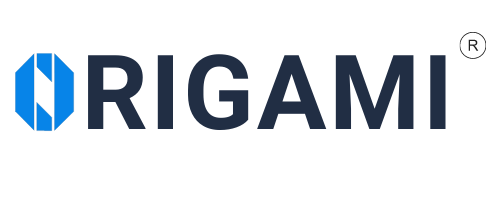
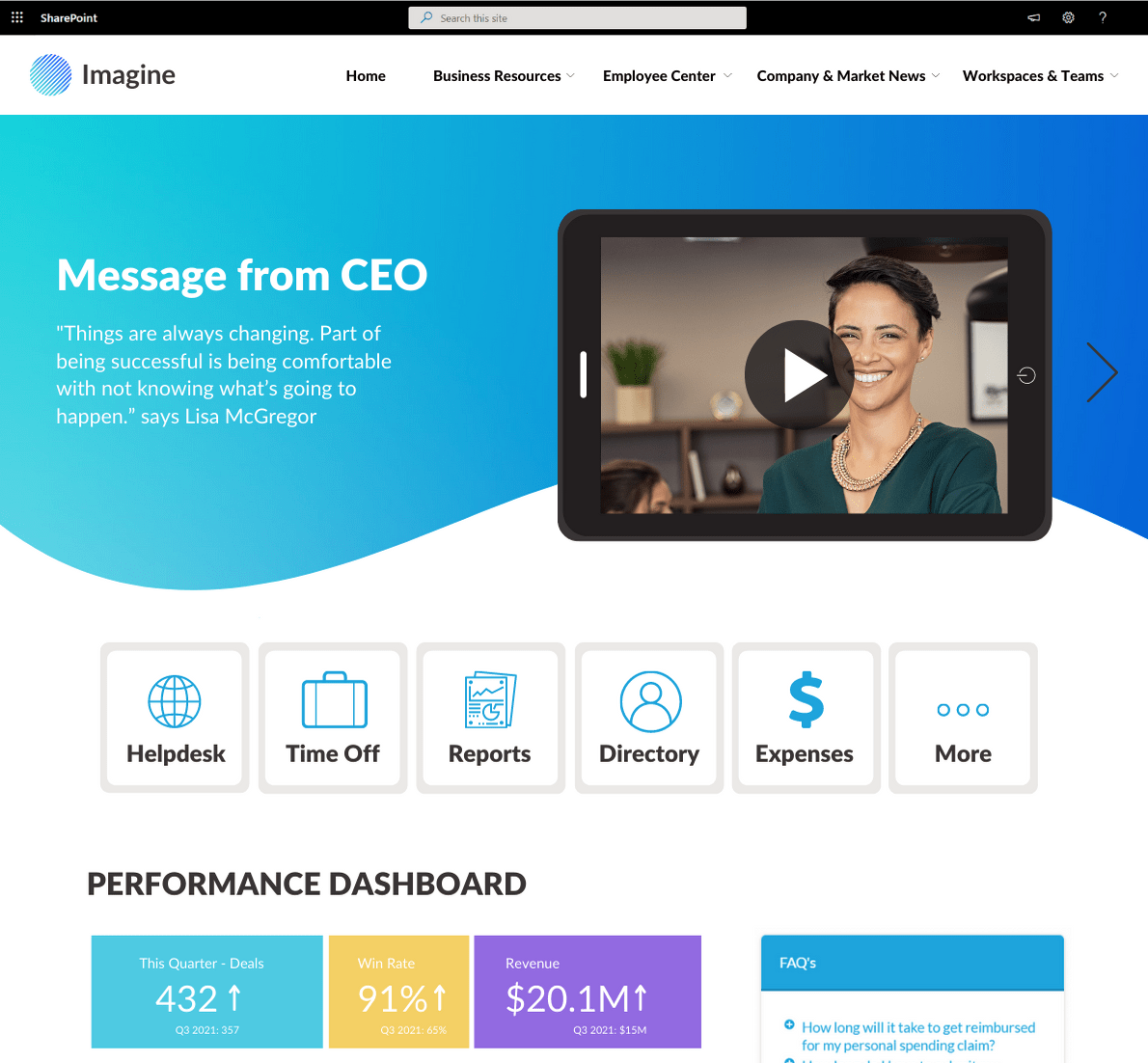



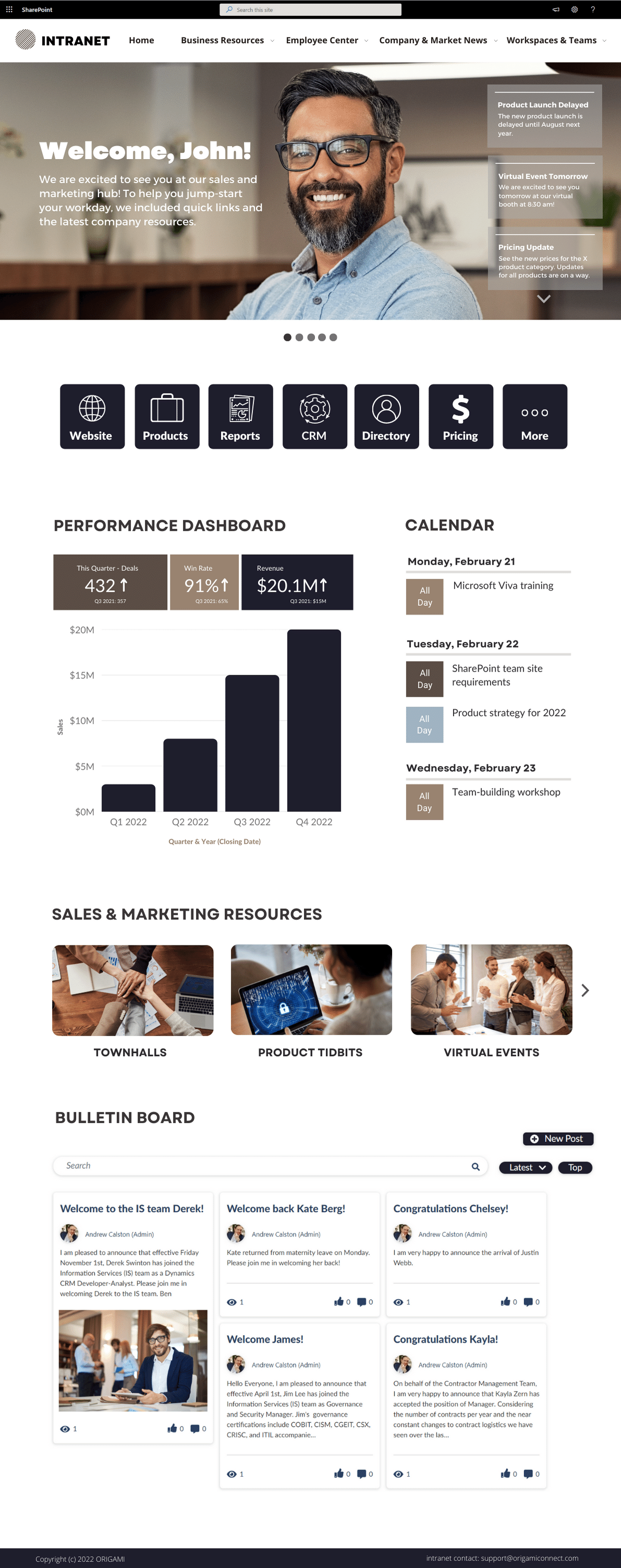



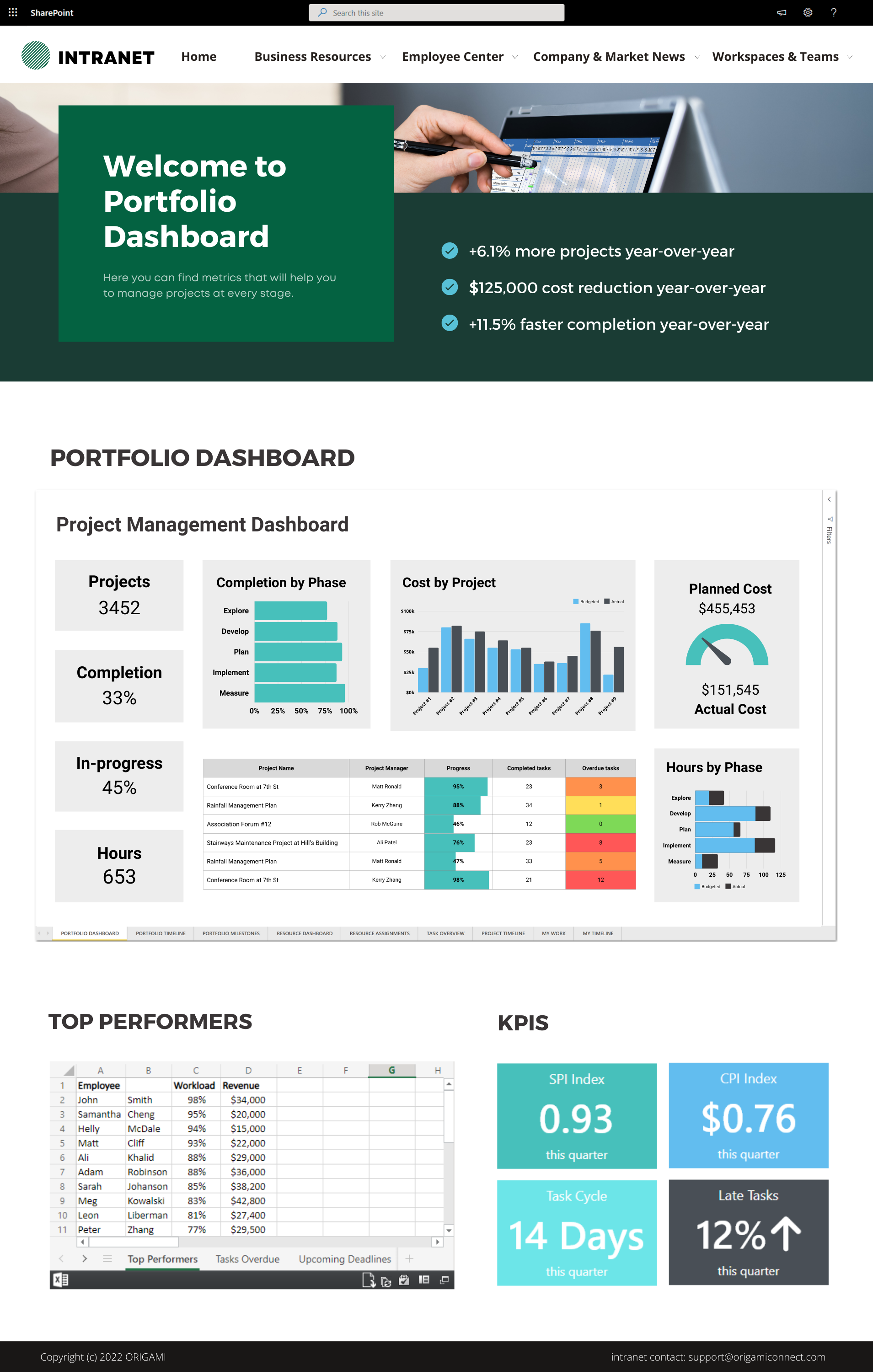







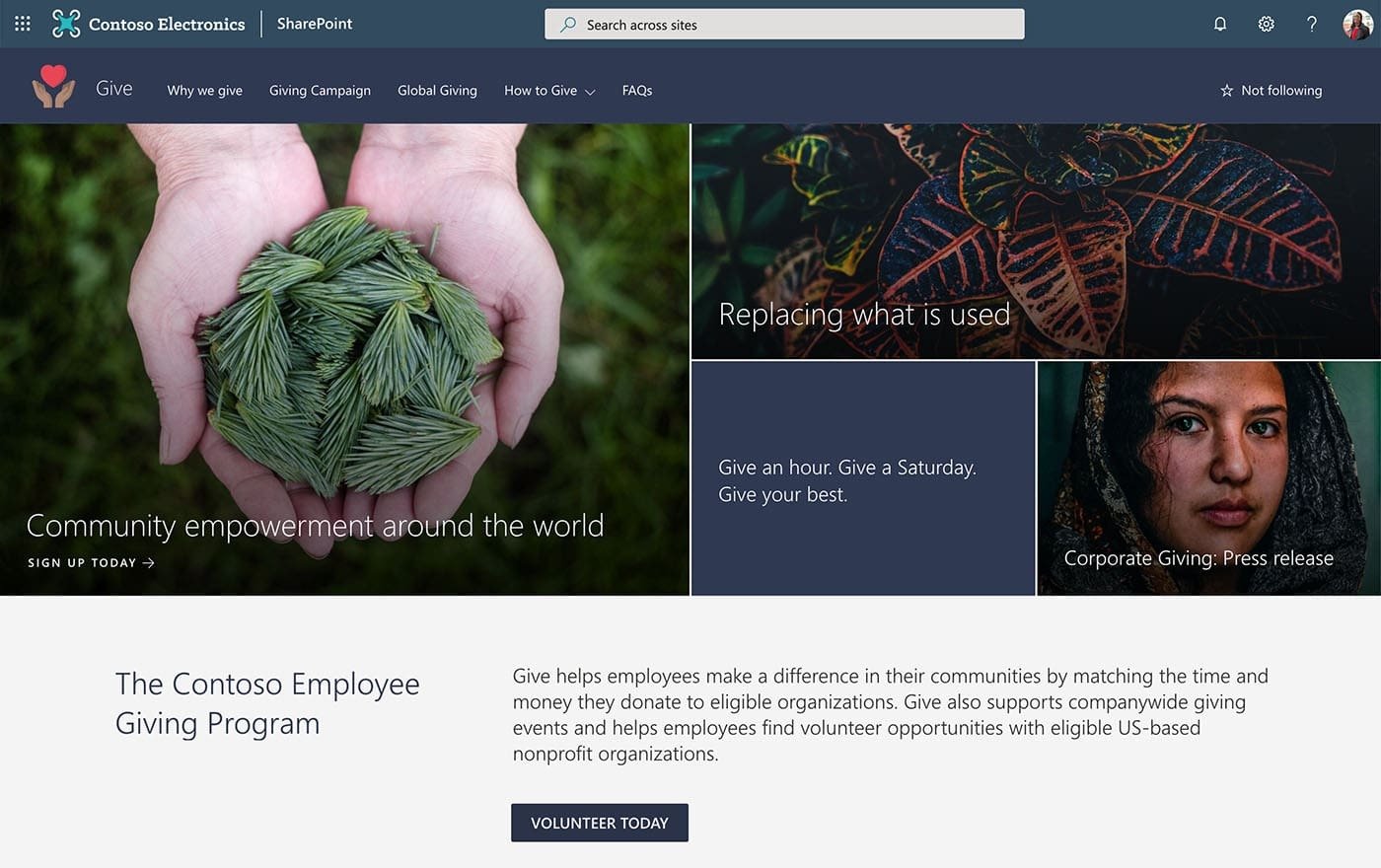
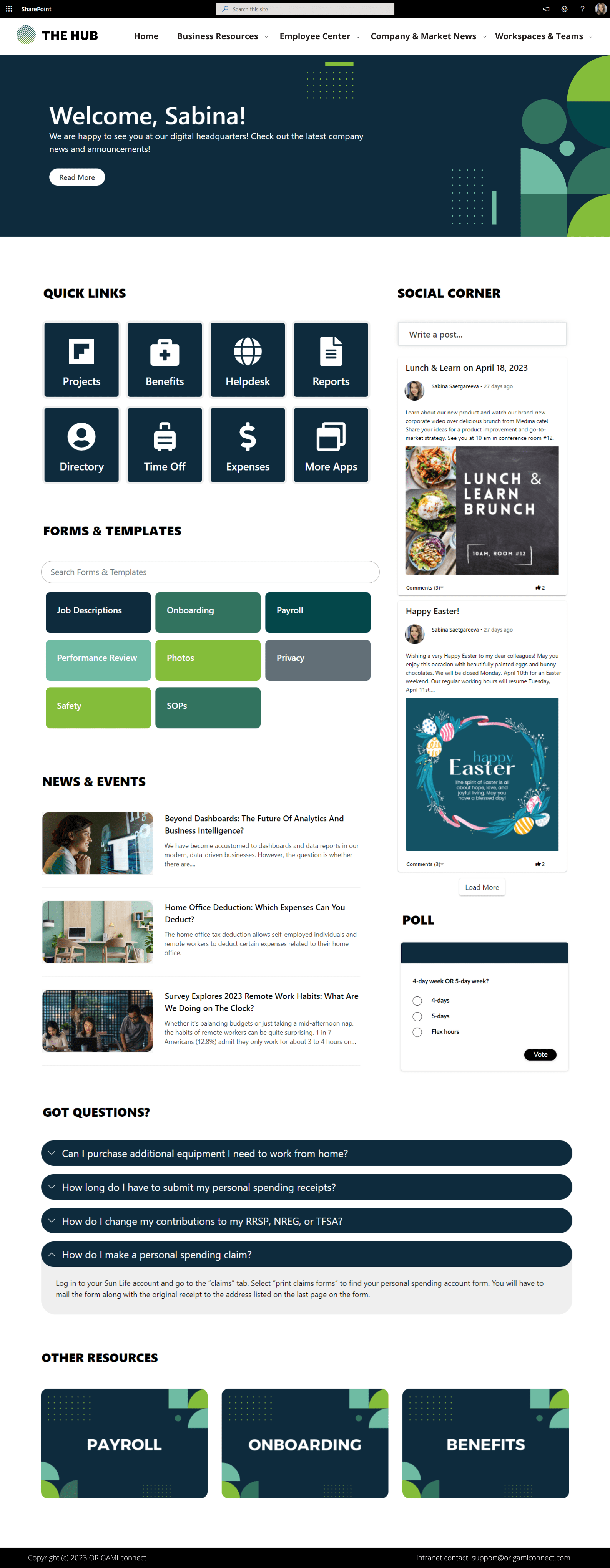












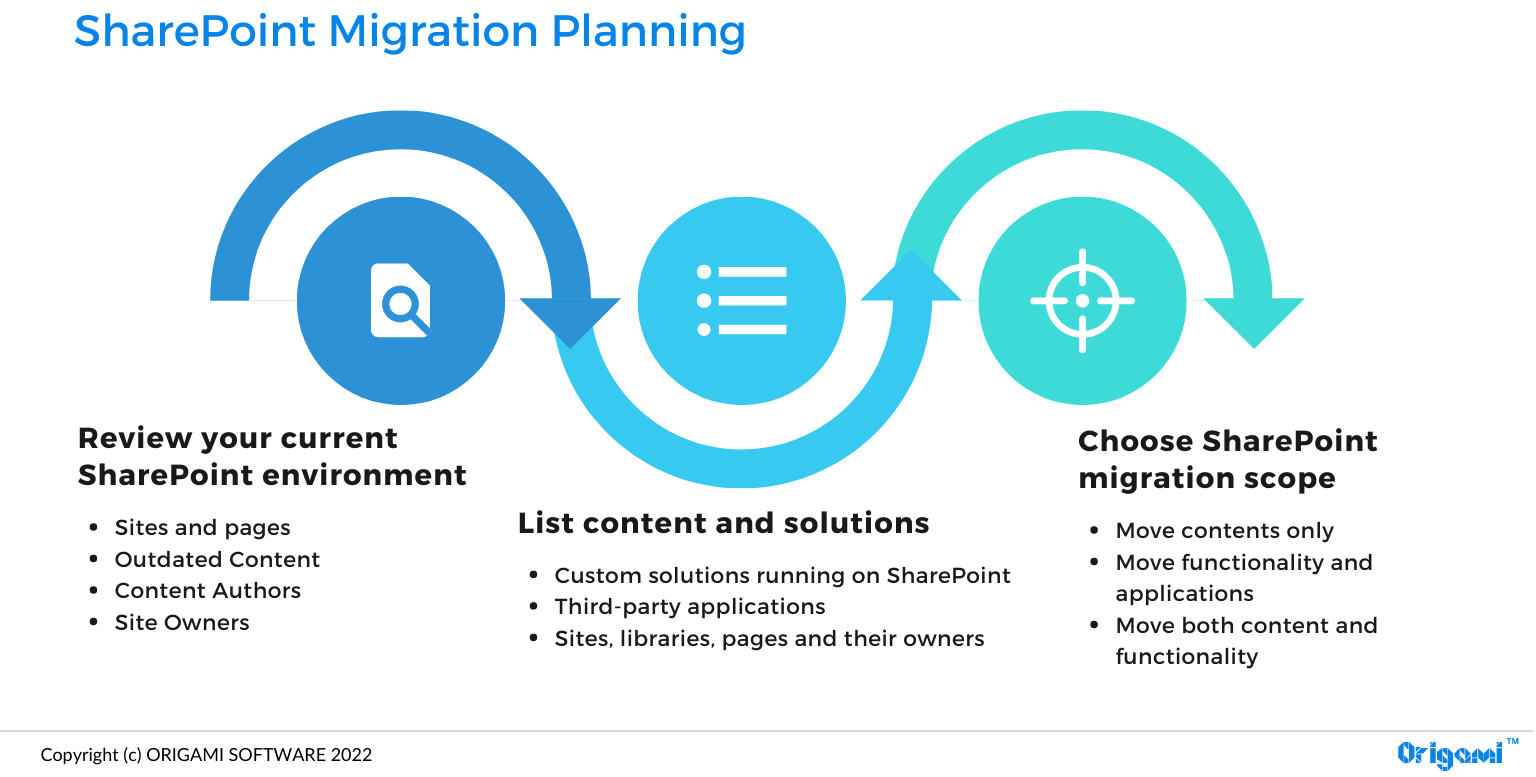
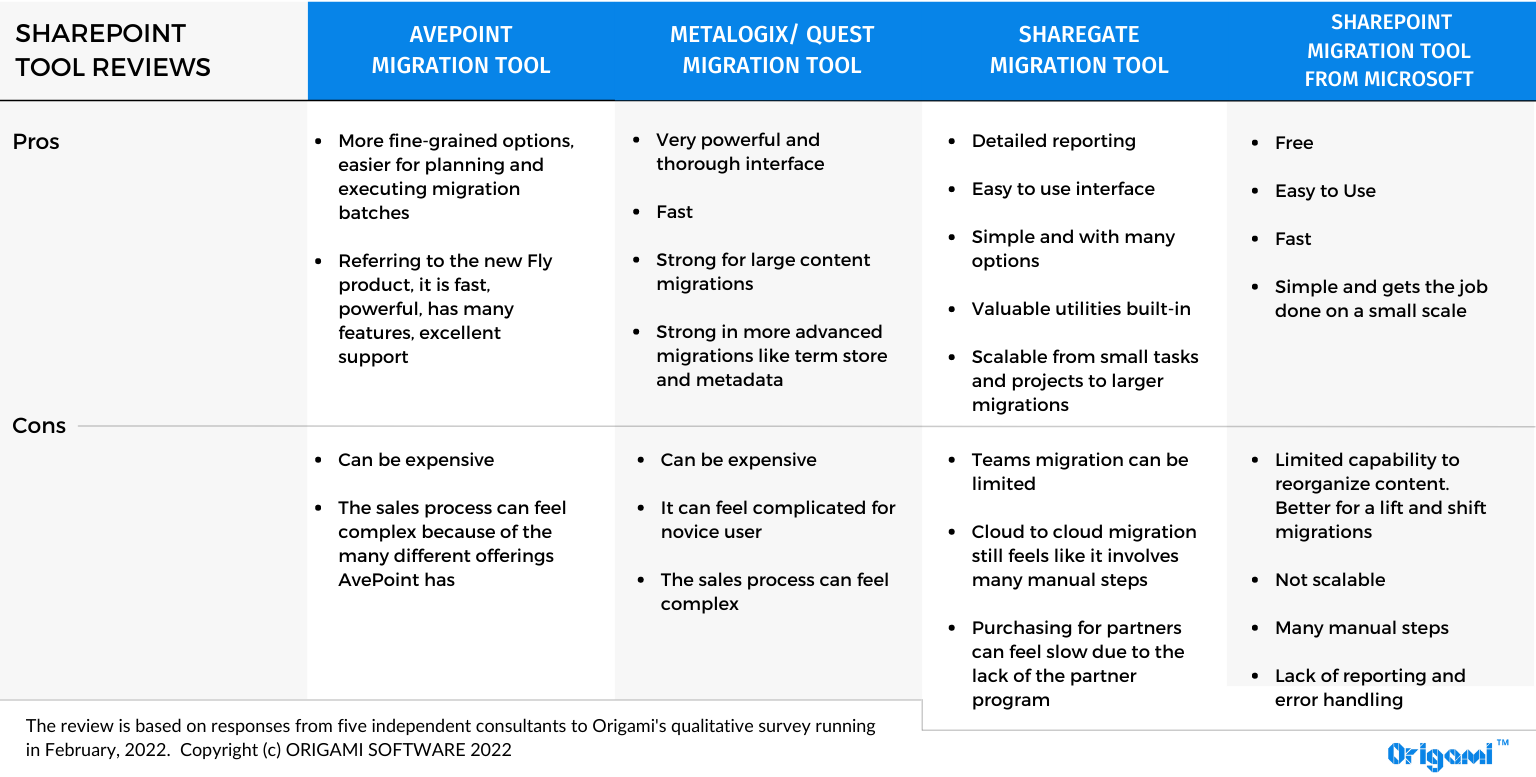







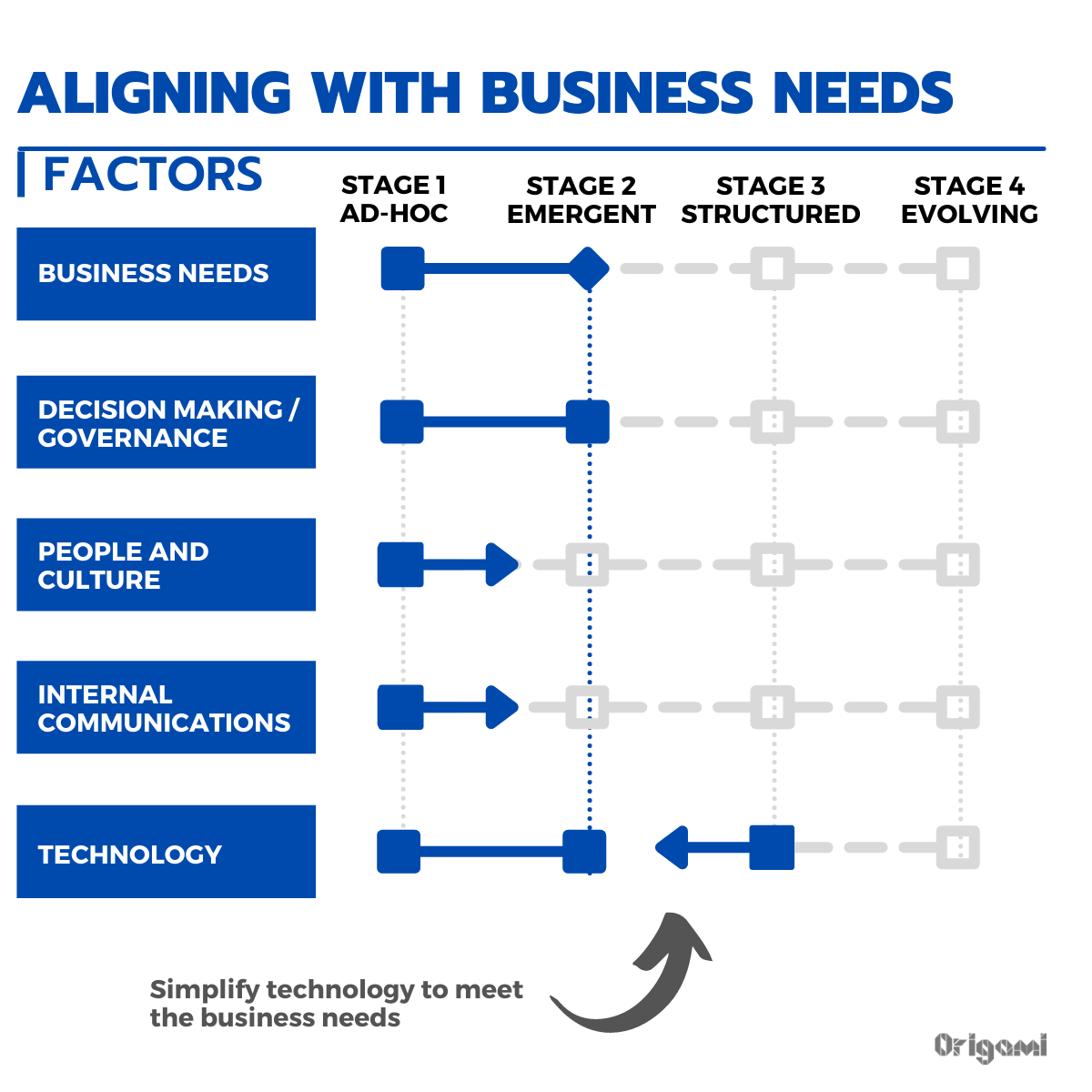


So, how much is it to build a SharePoint intranet?
What’s surprising is that there is barely any information that can help you put together a budget—let’s look at real numbers you can build a business case with.